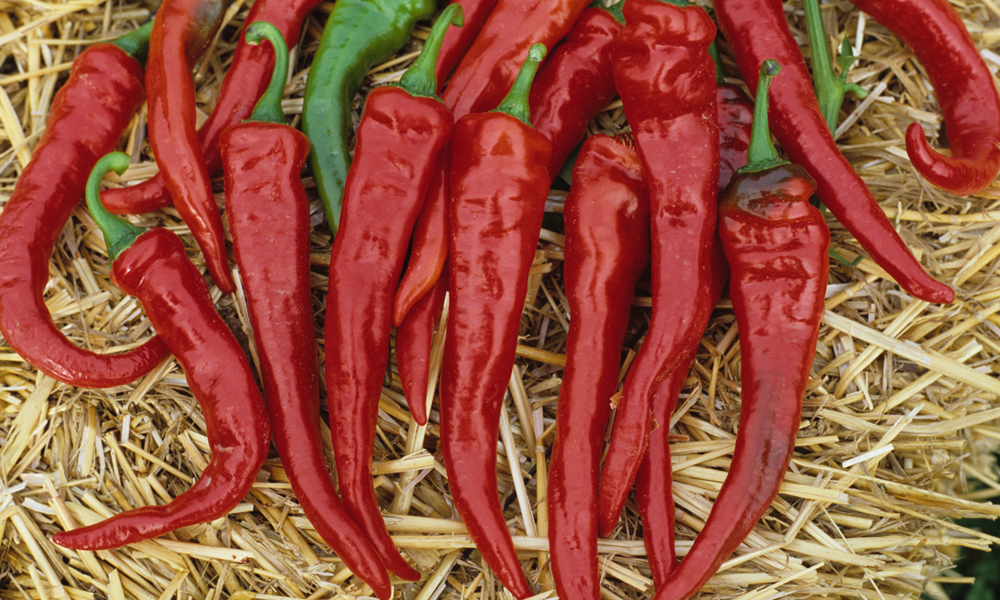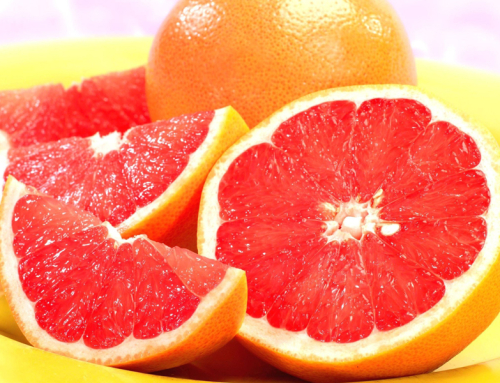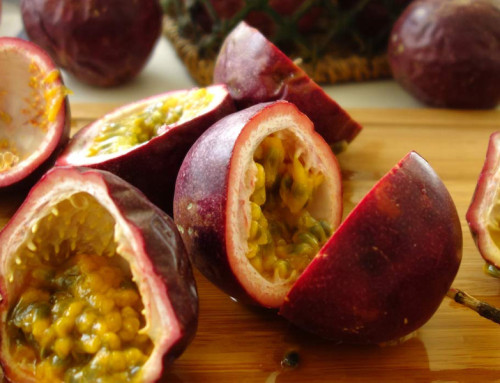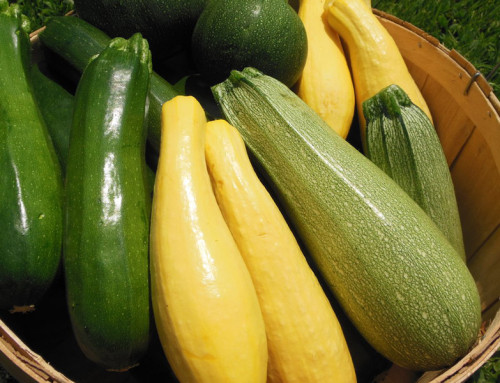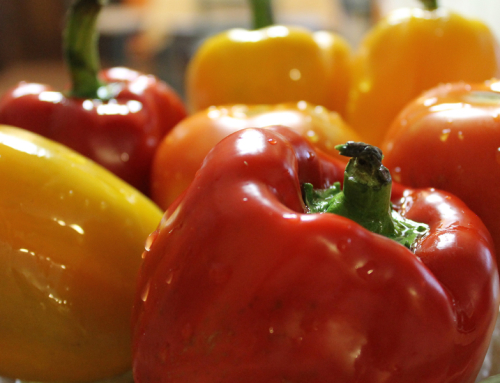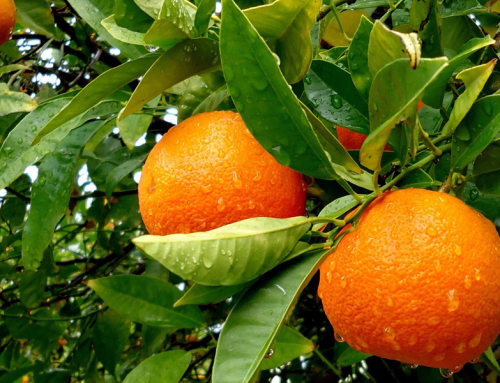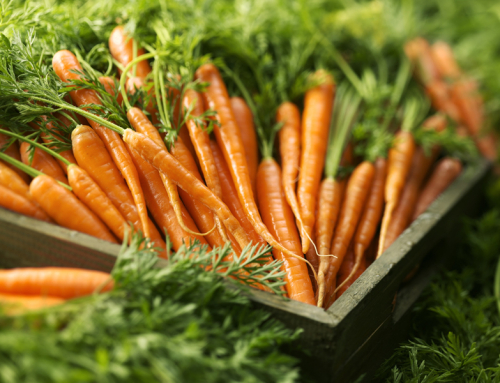- 100 grams – 318 calories
Cayennes are a spicy hot type of chili peppers that have been used both for food and medicine by the native people of Central America and South America for thousands of years. Cayenne is named for the capital of French Guiana. Related to nightshade, cayenne pepper comes from the genus Capsicum of the family Solanaceae. This pepper was introduced to Europe, then areas in India and Asia by early explorers.
Basic Information
Cayenne peppers are grown commercially all over the world, though they grow much better in warmer climates with long growing seasons. The long and slender fruit is more like a bright red pod, with many small cream-colored seeds that are attached to a white fleshy membrane known as a placenta. The fruits become red as they ripen, after which they are harvested and dried, giving them their shriveled appearance. These inner components of placenta, or ribs, and seeds are what makes these peppers extremely hot with a rating of anywhere from 30,000 to 50,000 on the Scoville scale, which measures a pepper’s heat in units.
Nutritional Components of Cayenne Pepper
This pungent pepper is a source of fiber, protein, and fat. Per 100 grams, there are 318 calories. Cayenne pepper is also a good source of folate, B Vitamins, Vitamins A, C, E, and K, as well as significant amounts of potassium, copper, iron, magnesium, manganese, phosphorous, and zinc. However, the real health benefits come from the active alkaloid capsaicinoids, most notably capsaicin, capsanthin, and capsorubin.
Benefits to Health
- Pain Relief
The active nutritional component in cayenne pepper, capsaicin, is commonly known for its ability to relive symptoms of pain. When applied to the skin, capsaicin interferes with the ability of certain substances to send pain messages to the brain to bring about relief. The effectiveness of this spicy pod to reduce pain has been shown to be extremely effective in pain that is related to the joints, such as with certain types of arthritis and fibromyalgia, post-surgical pain, cluster headache pain, and various types of nerve pain, such as with diabetic peripheral neuropathy and shingles. - Digestion
Cayenne has been used for centuries for its benefits to the digestive tract. This pungent fruit may stimulate digestion, help to ease nausea and heartburn, reduce gas buildup, and stimulate the intestinal muscles to increase the absorption of nutrients. - Cardiovascular Health
Eating cayenne peppers may dilate the blood vessels, helping to increase circulation to improve blood flow throughout the entire body. This spicy herb may also lower bad cholesterol to help to protect against atherosclerosis. Research shows that cayenne may help to lower blood pressure and aid in regulation of heart rhythm. - Psoriasis
Applied topically, capsaicin in cayenne pepper has been shown to reduce the inflammation and itching that are commonly associated with the skin disorder psoriasis. It may help with other skin rashes as well. - Other Benefits
New studies are being conducted regularly on the health benefits of cayenne pepper and its components, especially capsaicin. These spicy pods are showing promise in increasing metabolism and suppressing appetite to possibly aid in weight loss. The components in these peppers may help in the prevention of certain types of cancer. It is also being shown that cayenne pepper eaten at meals may reduce the amount of insulin needed by diabetics.
How to Prepare and Serve Cayenne Pepper
Cayenne pepper can be eaten as is and used in a variety of recipes. When preparing this pepper for use, it is important to wear gloves and to avoid metal utensils, as the oils in the cayenne cling to metal even after washing. If you wish to reduce the amount of heat provided by these vegetables, scrape out part or all of the seeds and placental membrane inside of the pods. You can add these chili peppers whole or chop and add them as desired. However, the dried, chopped or powdered forms, as well as the liquid hot sauce, are more commonly used in cuisine.
- Seasoning while Cooking: Cayenne pepper is mainly used as a seasoning for all sorts of dishes. You can add this spice while cooking casseroles and hot dishes. If you like it hot, you can sprinkle liberally on meats or vegetables when grilling. You can also kick up the heat of your favorite soups and stews with a dash of cayenne.
- Sauces: Cayenne is most notably used in a wide range of hot sauce products, being the main ingredient in the sauce used to make the popular dish of buffalo wings. Like the chopped and powdered forms, you can use this sauce to spice up any dish.
- Toppings: Dried cayenne pepper flakes are a common ingredient used to top pizza. You can add them to salads, hot and cold sandwiches, and other dishes as well when you want to spice things up a bit.
- Beverages: Add a pinch of cayenne to teas and other beverages for a bit of a kick. Ground cayenne is frequently add to hot chocolate drinks in Latin American cultures.
Choosing and Storing Cayenne Pepper
Cayenne peppers can be found year-round at stores, both fresh and in dried or powdered forms. Choose those that are bright red in color with no visible signs of discoloration or mold. You should store these pods in a sealed container in the refrigerator, where they should last for at least a week. Dried whole, chopped, or ground peppers can be stored in an airtight container in a cool and dark place and will keep for several months.
You can buy creams and other topical preparations containing the active component capsaicin at the store. Store these in a cool, dark place when not in use.
Cayenne Pepper Safety Concerns
The active components in cayenne pepper are volatile substances and can burn anything they touch. Where gloves when handling directly and avoid touching the skin or rubbing your eyes. To reduce the pain and inflammation initially felt after eating these hot peppers, consuming high-fat dairy products, such as yogurt, cream, or whole milk, may help to reduce the severity and duration of the stinging. This is because the volatile oils in chili peppers are fat-soluble. Cayenne peppers are also prone to dangerous aflatoxin, so avoid consuming peppers that show signs of mold.

